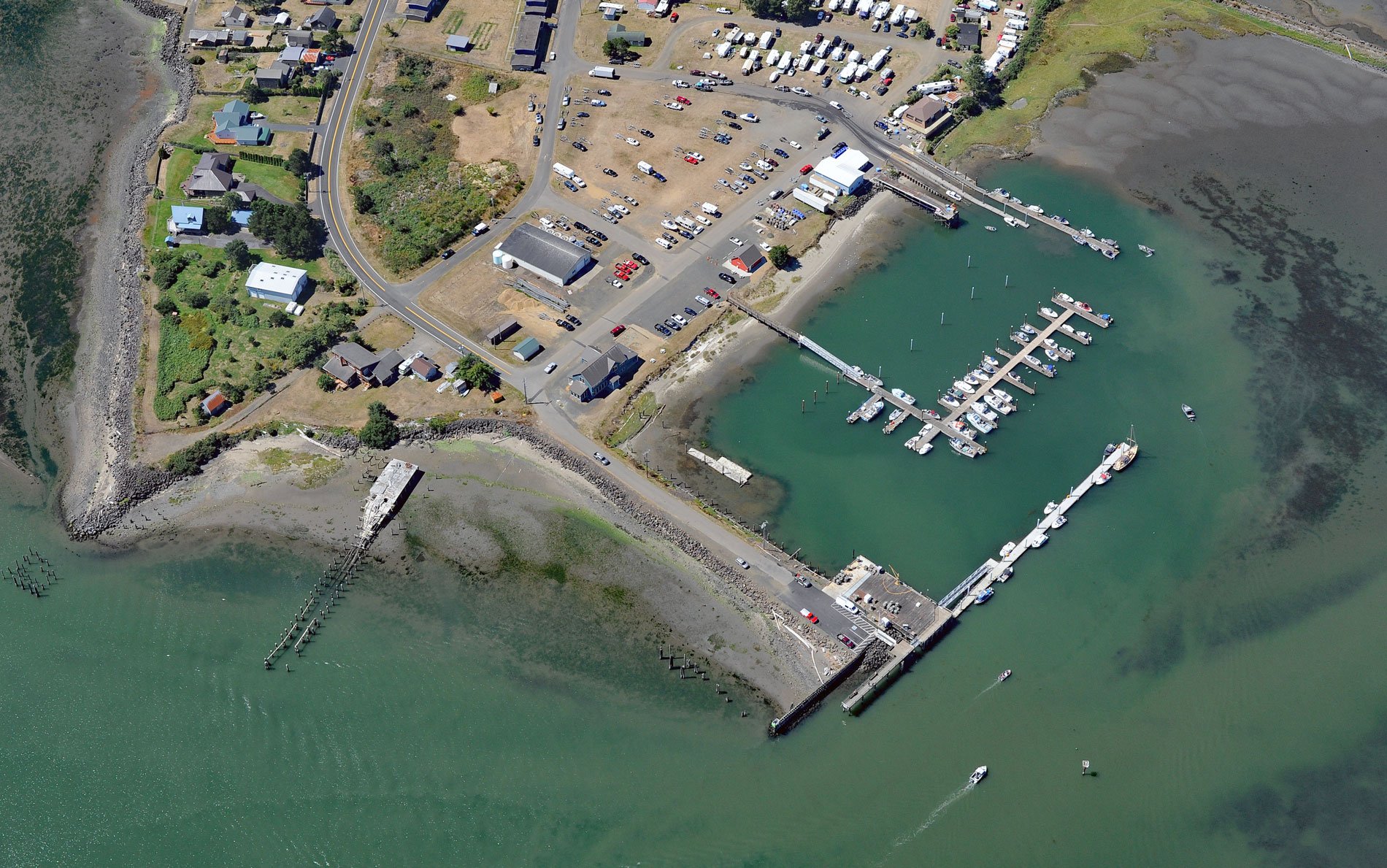Toke Point is at the end of Tokeland Spit that projects southeast for 3 miles (5 km) from the northern shore of Willapa Bay, a large estuary formed by several streams, the largest being Willapa River, about 55 miles (89 km) southwest of Olympia and 15 miles (24 km) south-southeast of Westport, Washington. The point is named after Chief Toke of the Shoalwater Bay tribe, whose family inhabited a seasonal fish camp on the spit in the 1800s. Willapa River starts at an elevation of roughly 2,300 feet (700 m) on the north flank of Huckleberry Ridge in the Willapa Hills and flows generally northwest for 36 miles (58 km), draining a watershed of 83,200 acres (33,670 ha). Willapa Bay is formed by a long barrier spit called Long Beach that developed from sediment transported northward from the Colombia River and ends at Leadbetter Point. Three prominent spits or beach ridges and their associated marshes and fringing tidal flats form the north shore of Willapa Bay. The oldest and farthest from the coast is called Kindred Island which is uninhabited and serves as an anchor point for dikes that transform the adjacent marshes into grazing pasture. The large middle spit forms the Tokeland Peninsula which supports the community of Tokeland. The youngest and most unstable is Empire Spit which is a washover deposit formed by the rapid northward migration of the bay entrance channel and associated retreat of Cape Shoalwater at the north entrance of the bay.
Willapa Bay and the surrounding watersheds are the traditional territory of the Willapa Chinook people that spoke Kwalhioqua-Clatskanie, a now extinct Athabaskan language of the lower Columbia River. In 1788, Captain John Meares on the Felice Adventurer anchored for several hours at the bay entrance and was visited by a man and boy in a dugout canoe. Meares named the estuary Shoalwater Bay since at low tide, approximately half of the bay becomes an exposed tidal flat. Charles J.W. Russell arrived on the shores of Shoalwater Bay in the 1850s and developed a market for the abundant oysters laying in the shallow channels and sandy beaches of the bay. In 1852, James Swan settled at Shoalwater Bay and became an oysterman and ethnographer of the Willapa Chinook. Epidemics in the early 1800s along the lower Columbia River and in Willapa Bay resulted in the surviving Willapa Chinook and Lower Chehalis people to consolidate. In 1866, under the Treaty of Olympia, President Andrew Johnson created a reservation of 334 acres (135 ha) that came to be called the Georgetown Reservation and later the Shoalwater Bay Indian Reservation; however, most the Shoalwater Bay people chose to remain along the southern shore of Willapa Bay at present-day Bruceport and Bay Center. In 1890, the first territorial legislature set aside 9,872 acres (3,995 ha) of tidelands in Willapa Bay for a state oyster reserve to protect the native oyster, but these populations were over eventually exploited, and since the 1920s, the fishery has become a large-scale mariculture for the introduced Pacific oyster.
Evidence suggests that the northward migration of the Willapa Bay entrance channel has exposed the north shore of the bay to deep water waves. Cape Shoalwater historically protected Tokeland Spit from direct wave attack; however, over the last century, portions of the Cape Shoalwater shoreline have retreated more than 3 miles (5 km) to the north, destroying a historic lighthouse and threatening existing infrastructure. Graveyard Spit and Empire Spit provided natural protection for the community of Tokeland and the Shoalwater Bay Reservation during extreme high tide storms. However, since the retreat of Cape Shoalwater, the barrier spit and dune system has been significantly eroded by storm waves and by the 1990s, the only remaining natural protection from wave attack was a significantly smaller barrier dune located on Empire Spit. In 1995, Empire Spit was breached resulting in the flooding and direct wave attack on Tokeland Spit during storms in 2006 and 2007. In 2009, the U.S. Army Corps of Engineers determined that barrier dune restoration was the most feasible and cost-effective means to reduce storm damage. The project dredged approximately 600,000 cubic yards (458,733 m3) of sand from the Willapa Bay north entrance channel to close an existing breach on Empire Spit and reconstructed a dune on Graveyard Spit to mitigate further flood damage. Although the migration of the Willapa Bay entrance channel appears to have halted, erosion by storm waves and currents will continue, and the restored barrier dune will require maintenance on a regular basis. Read more here and here. Explore more of Toke Point and Willapa Bay here:

